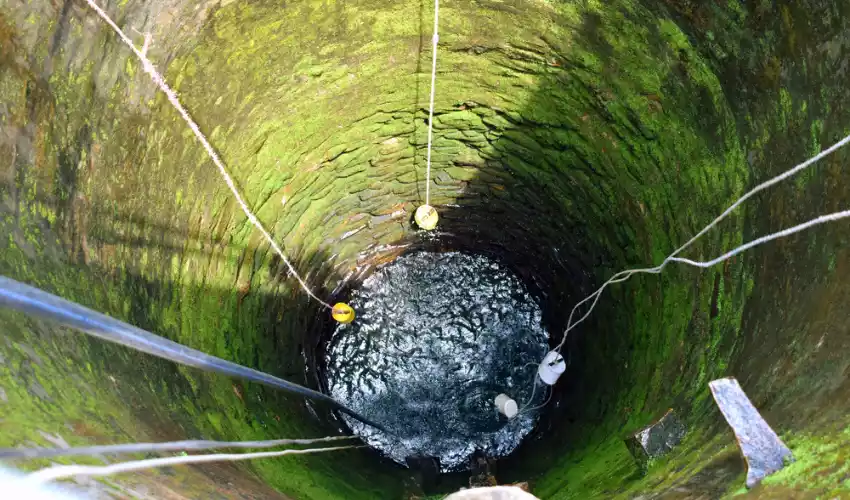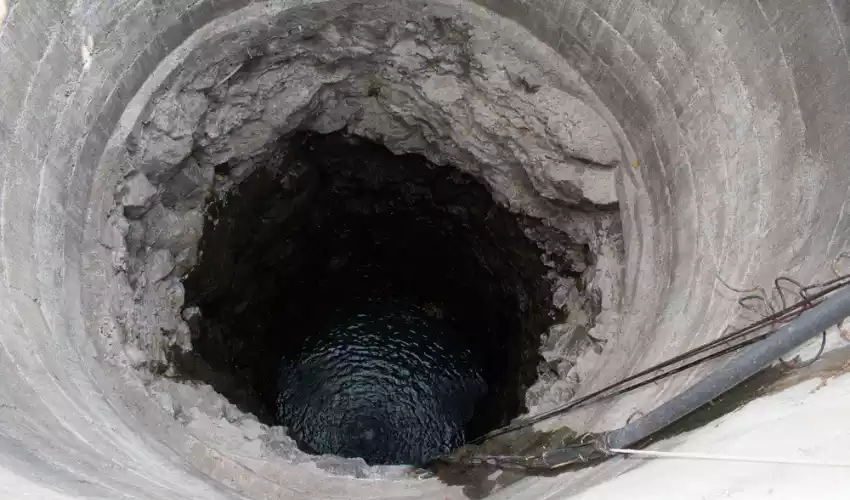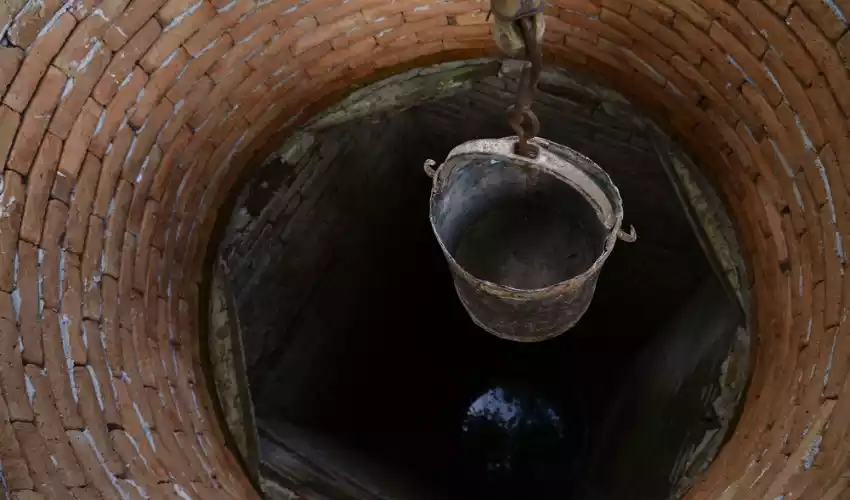Well water recovery is a critical issue for countless individuals and communities worldwide. With population growth and climate change, the sustainable use of water resources has never been more important. Optimal well water recovery rates ensure a consistent, reliable water supply for households, farms, and industries.
Improving the well water recovery rate is vital to maintaining a healthy and efficient water supply. Higher recovery rates translate to more available water, reducing reliance on municipal supplies or expensive water hauling services. It’s an economical and environmental solution that promotes sustainable water management.
That being said, the well water recovery process isn’t a simple one. Multiple factors, ranging from the well’s construction to aquifer properties, play a pivotal role in dictating recovery rates. Accurate knowledge and strategic implementation of specific techniques can significantly enhance well water recovery.
Factors Impacting Well Water Recovery Rate
Well Depth and Construction
The design and construction of the well can greatly influence the water recovery rate. For instance, the depth of the well is pivotal because it determines the volume of water the well can access. Deeper wells can often access more abundant water supplies, thereby potentially improving recovery rates. However, constructing a well too deep may risk encountering non-potable water or high pressures that could make pumping difficult.
The diameter and casing of the well are equally important. Wider wells have more surface area for water to infiltrate, improving the recovery rate. Meanwhile, the casing, often made of steel or plastic, ensures the structural integrity of the well, preventing its collapse and contamination of the water supply.

Aquifer Properties
Aquifers, the underground layers of rock that store and transmit groundwater, have inherent properties that affect the water recovery rate. Key among these are permeability and transmissivity. Permeability refers to the rock’s capacity to allow water to flow through it. Greater permeability means the aquifer can deliver water to the well more quickly, improving recovery rates.
Transmissivity measures the rate at which water is transmitted through the aquifer towards the well. Higher transmissivity means more water can be delivered to the well in less time, improving the recovery rate. The storage capacity of the aquifer, which indicates the volume of water it can hold, also plays a significant role in determining the well’s recovery rate.
Overdraft and Its Impact
Overdraft refers to the excessive extraction of water from an aquifer, leading to the reduction of the water table. When the rate of extraction exceeds the rate of recharge, the water table falls, reducing the amount of water that can be recovered. This not only decreases the well water recovery rate but also poses severe environmental risks such as land subsidence and the degradation of water quality due to the intrusion of contaminants.
Practical Steps to Boost Recovery Rate
Regular Well Maintenance
Maintaining the well is fundamental to its efficient operation. Regular inspections can identify issues such as casing leaks, deterioration, or blockages by sediment, algae, or bacterial build-up. These issues can restrict water flow, reducing the recovery rate. Therefore, frequent cleaning and repair work are essential to maintaining the efficiency of the well, thereby optimizing the water recovery rate.
Pump Efficiency and Placement
The pump plays a crucial role in water recovery. A pump that’s too small may not be able to extract enough water, while one that’s too large can lead to rapid drawdown, reducing the well’s efficiency over time. Also, the depth at which the pump is placed affects the efficiency of water extraction. Therefore, selecting a pump that matches the well’s yield and placing it at the right depth can significantly enhance the recovery rate.
Hydrofracturing: A Solution
Hydrofracturing is a technique often used to enhance well water recovery rates. It involves injecting water at high pressure into the well to create fractures in the surrounding rock or soil. These fractures increase the permeability of the aquifer, improving the flow of water to the well and subsequently enhancing the recovery rate.
Managed Aquifer Recharge (MAR)
Managed Aquifer Recharge is a proactive water management strategy involving the intentional recharge of water to aquifers for subsequent recovery or environmental benefit. This is done by modifying natural infiltration processes such as pond or basin infiltration or by using direct injection wells. MAR can enhance the sustainable yield of aquifers, thus improving well water recovery rates.

Technological Advances in Well Recovery
Smart Pump Technologies
Smart pumps, equipped with sensors and automated controls, are becoming increasingly popular in improving well water recovery rates. These intelligent devices can monitor and control the water extraction process, ensuring optimal performance. For example, they can automatically adjust the pumping speed based on the well’s water level, preventing over-extraction and enhancing the recovery rate.
Advanced Drilling Techniques
Modern drilling methods can increase the efficiency of well construction, thereby boosting water recovery rates. Techniques such as rotary drilling, which uses a rotating drill bit to penetrate the ground, allow for deeper wells and wider bores, increasing water access. Moreover, well-lining techniques, like the slotted liner or screen, can prevent sediment from entering the well while allowing more water to infiltrate, improving recovery rates.
Water Monitoring Systems
Water monitoring systems are technological solutions that provide valuable data about well performance and water usage. These systems use various sensors to track parameters such as water level, flow rate, and water quality. The real-time data provided by these systems can alert well owners to potential issues, allowing for timely interventions that can preserve or improve the well’s recovery rate.
Effects of Improved Recovery on Water Security
Ensuring Sustainable Water Supply
Improving well water recovery rates plays a vital role in ensuring a sustainable water supply. Enhanced recovery rates mean that more water is available for use, reducing the risk of water shortages, especially during dry periods. This not only provides water security for individual households but also supports agricultural activities and industrial operations, which are vital for the economy.
Reducing Overdependence on Municipal Supply
Well water serves as an important alternative to municipal water supply, especially in rural areas where municipal water infrastructure may not be extensive. By improving well water recovery rates, households can reduce their reliance on municipal water supply, which may be costly or subjected to usage restrictions. This not only leads to cost savings but also promotes self-sufficiency.
Economic Implications
Enhanced well water recovery can have positive economic implications. By ensuring a reliable water supply, it reduces the need for expensive water hauling services or the construction of additional wells. It also supports activities like agriculture and industry that contribute to economic growth. Moreover, the use of smart technologies can reduce energy consumption, leading to further cost savings.

Legal and Regulatory Aspects
Water Rights and Usage Policies
Water extraction, including well water recovery, is often governed by local, regional, or national laws and regulations. These laws typically define water rights, establish usage limits, and set standards for well construction and maintenance. Adhering to these legal requirements is crucial to avoid penalties and ensure the sustainable use of water resources.
Compliance with Environmental Regulations
In addition to water rights, well owners also need to comply with environmental regulations that protect groundwater resources. These regulations might include restrictions on overdraft, requirements for wastewater disposal, and measures to prevent groundwater contamination. By complying with these regulations, well owners can improve their well water recovery rates in an environmentally responsible manner.
Common Mistakes in Improving Recovery Rate
Ignoring Regular Maintenance
One of the most common mistakes that well owners make is neglecting regular maintenance. Over time, sediment, mineral deposits, and other contaminants can build up in the well, reducing its water yield and recovery rate. Regular cleaning and maintenance can prevent these issues and keep the well operating at its optimal capacity.
Incorrect Pump Sizing and Placement
Selecting the right pump and placing it at the right depth is crucial for efficient water extraction. A pump that’s too small may not be able to extract enough water, while one that’s too large can deplete the water level too quickly, reducing the recovery rate. Incorrect placement of the pump can also lead to problems, such as drawing air instead of water if placed too high or stirring up sediment if placed too low.
Mismanagement of Aquifer Resources
Over-extraction or overdraft of an aquifer is another common mistake that can negatively impact well water recovery rates. Excessive pumping can deplete the water table, reducing the amount of water available for recovery and potentially causing long-term damage to the aquifer. Responsible management of aquifer resources is therefore key to maintaining sustainable well water recovery rates.
Frequently Asked Questions
How Does Well Depth Affect Recovery Rate?
The depth of a well directly impacts the available water volume. Generally, deeper wells access more abundant water supplies, improving the recovery rate. However, it’s important to balance depth with the quality and pressure of the water, which can change at different depths.
What is Overdraft, and Why is It Harmful?
Overdraft refers to the situation where water is extracted from an aquifer faster than it can be recharged naturally. Overdraft can lead to a lower water table, making it more difficult to recover water from the well. It can also cause land subsidence and degradation of water quality due to the intrusion of contaminants or saline water.
How Does Regular Maintenance Improve Well Water Recovery Rate?
Regular maintenance ensures that the well and its associated systems are functioning optimally. Cleaning and repair work can remove blockages or fix damages that may restrict water flow, reducing the recovery rate. In addition, maintenance checks can detect potential issues early, preventing further problems that could lower the well’s performance.
Conclusion
Improving the well water recovery rate is a multifaceted task, involving good well construction, regular maintenance, and efficient pumping strategies. It is a goal that requires both understanding of the factors at play and effective practical steps to manage these factors.
With the advancement in technology, innovative solutions are making it easier to monitor and improve well water recovery. The adoption of these technologies, from smart pumps to water monitoring systems, not only enhances recovery rates but also fosters sustainable water use and resource management.
Finally, it is important to consider the broader implications of improved well water recovery rates. This extends beyond individual households or farms to include the sustainability of our water resources, our economic wellbeing, and our resilience in the face of water scarcity. Thus, every effort to improve well water recovery rate contributes to the larger goal of water security.